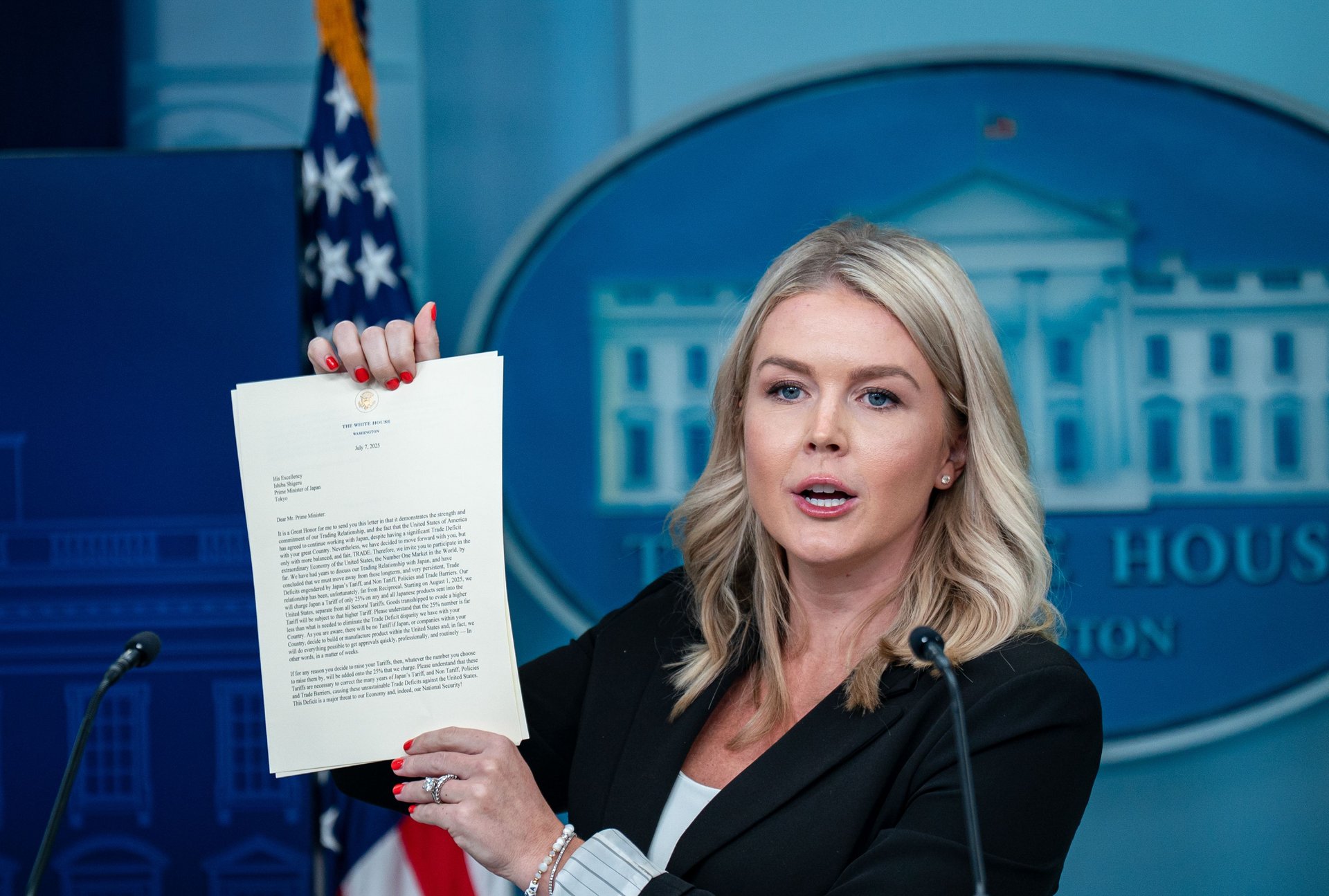Trump's tariffs could cost American households about $2,300, analysis says
The Yale Budget Lab analysis calculated the impact of tariffs on consumers, as well as on the current tariffs levied on Vietnam, China, and others

White House press secretary Karoline Leavitt holds a trade letter sent by the White House to Japan during a news conference on Monday, July 7, 2025. (Al Drago/Bloomberg via Getty Images)
President Donald Trump’s tariffs could cost American families around $2,300 this year, according to new analysis from the Yale Budget Lab.
Suggested Reading
The latest threat of further import taxes continues Trump’s campaign to overhaul global commerce. The Trump administration sent 14 letters on Tuesday to trade partners that threatened to reimpose tariffs on South Korea, Japan, Thailand, Malaysia, and others by August 1 if they didn’t strike a trade deal that is favorable to the U.S. The anticipated tariff rates varied from 25% on Japan to 40% on Myanmar, a nation grappling with civil war.
Related Content
The Yale Budget Lab analysis calculated the price impact of those coming tariffs on consumers, in addition to the current tariffs levied on Vietnam and China, as well a 50% import tax on steel and aluminum, among other duties. The group devised a scenario where tariffs are fully passed onto the consumer and the Federal Reserve doesn’t intervene by lowering the cost of borrowing.
Under that scenario, U.S. households would lose out on $2,300 in price increases from the tariffs, amounting to a 1.7% increase in consumer prices.
In another scenario — one that factors in changes to imports in response to the tariffs — U.S. households face a $1,900 loss in income, a 1.5% consumer price increase. Economists across the ideological spectrum have long held that tariffs are equivalent to a tax because companies usually offload the price increases onto consumers.
“Tariffs are a regressive tax, especially in the short-run,” Ernie Tedeschi, director of economics at the Yale Budget Lab, wrote on X. He added that Trump’s tariffs are disproportionately affecting clothing and textiles.
The tariffs, the Yale Budget Lab estimates, bring the U.S.’ current effective tariff rate to 17.6%, the highest level since 1934.
Trump set August 1 as the new deadline for sweeping new trade deals with dozens of trading partners. But there are signs that foreign governments might have some leeway. On Tuesday, Trump was asked by reporters about the firmness of the deadline. “I would say firm but not 100% firm,” he said. “If they call up and they say, ‘We’d like to do something a different way,’ we’re going to be open to that. But essentially, that’s the way it is right now.”
